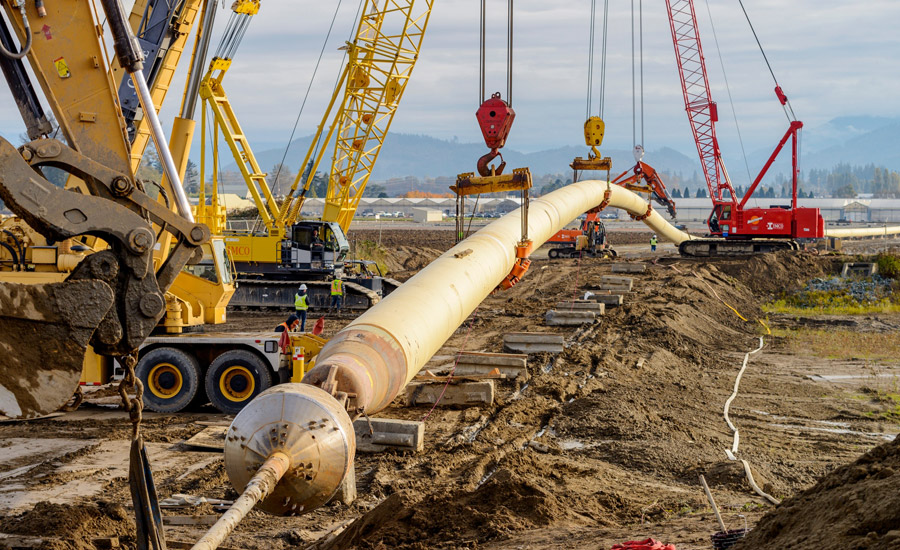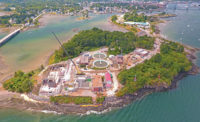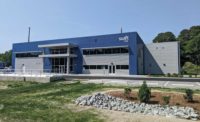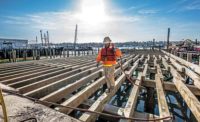Skagit River Raw Water Pipeline and Clearwell
Mount Vernon, Wash.
Best Water/Environment; Best Project – Excellence in Safety
Submitted By: IMCO General Construction
Owner: City of Anacortes
Lead Design Firm/Civil/Structural Engineer: HDR Engineering
General Contractor: IMCO General Construction
Subcontractors: Pacific Surveying & Engineering; Paso Robles Tank; QCC; Mills Electric; Shannon & Wilson; NW Corrosion; The HDD Co.
The design for the Anacortes water treatment plant resiliency project called for a 42-in.-dia welded steel pipeline to be extended underneath the Skagit River. It serves as a backup to the original 42-in.-dia concrete pipeline that was built in 1969. The lone pipeline presented a single point of failure that could disrupt water delivery to the city’s 60,000 residents as well as to two major petroleum refineries in Skagit County and the Naval Air Station on Whidbey Island.
The team added a 54.9-million-gallon second raw water line under the river and a 2-million-gallon clear well to operate in parallel with the facility’s existing treatment operations. The new pipeline can carry the full capacity of the city’s need while providing operators flexibility and allowing the original pipeline to be shut down for inspections.

Photo courtesy Will Austin Photography
The new pipeline is 3,100 lineal ft long and consists of three segments. Two segments, one on either side of the river, were installed using open trench pipe construction. The third segment, extending 1,960 lineal ft under the river between the two facilities, was installed using the horizontal directional drilling (HDD) method. This was critical to address environmental issues related to the fact that the Skagit River is a significant salmon habitat and popular fishing destination.
The immense scale of the pipeline required drilling 1,950 ft. The deepest point was nearly 60 ft below the riverbed. The river crossing segment was staged and assembled in sections within a temporary construction easement on an adjacent farm property.

Photo courtesy Will Austin Photography
After a month of drilling, the borehole was complete at a diameter of 48 in. The pipe-pull took 10 hours. Assembly and testing of the entire pipe string required field welding of thirty-three 50-ft-long pipe segments, which was done concurrently with the boring operation.
Physical and construction constraints at the river crossing posed significant complexity to the boring design within the protective dikes, around the existing water treatment facility and below the river. The horizontal directional drilling construction method provided several advantages. It did not require work within the high-water level for the river, and the depth of the boring meant there was no impact to the existing dikes on either side of the river. These factors significantly reduced the timeline and complexity of the project permitting process and increased the allowable construction window, saving both time and money.




